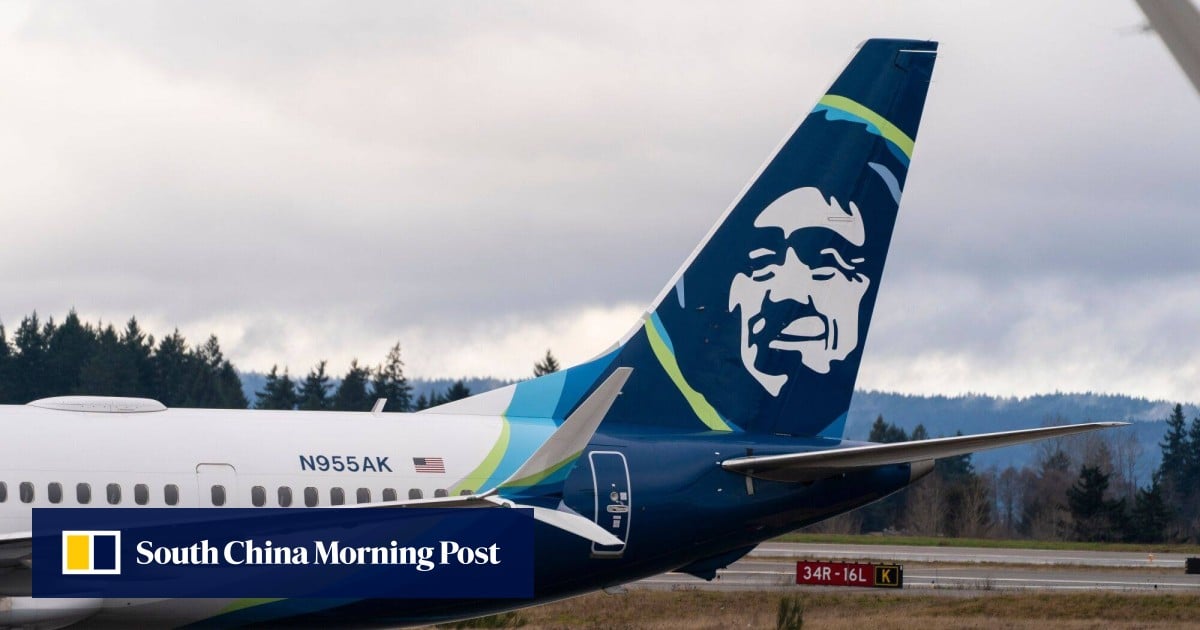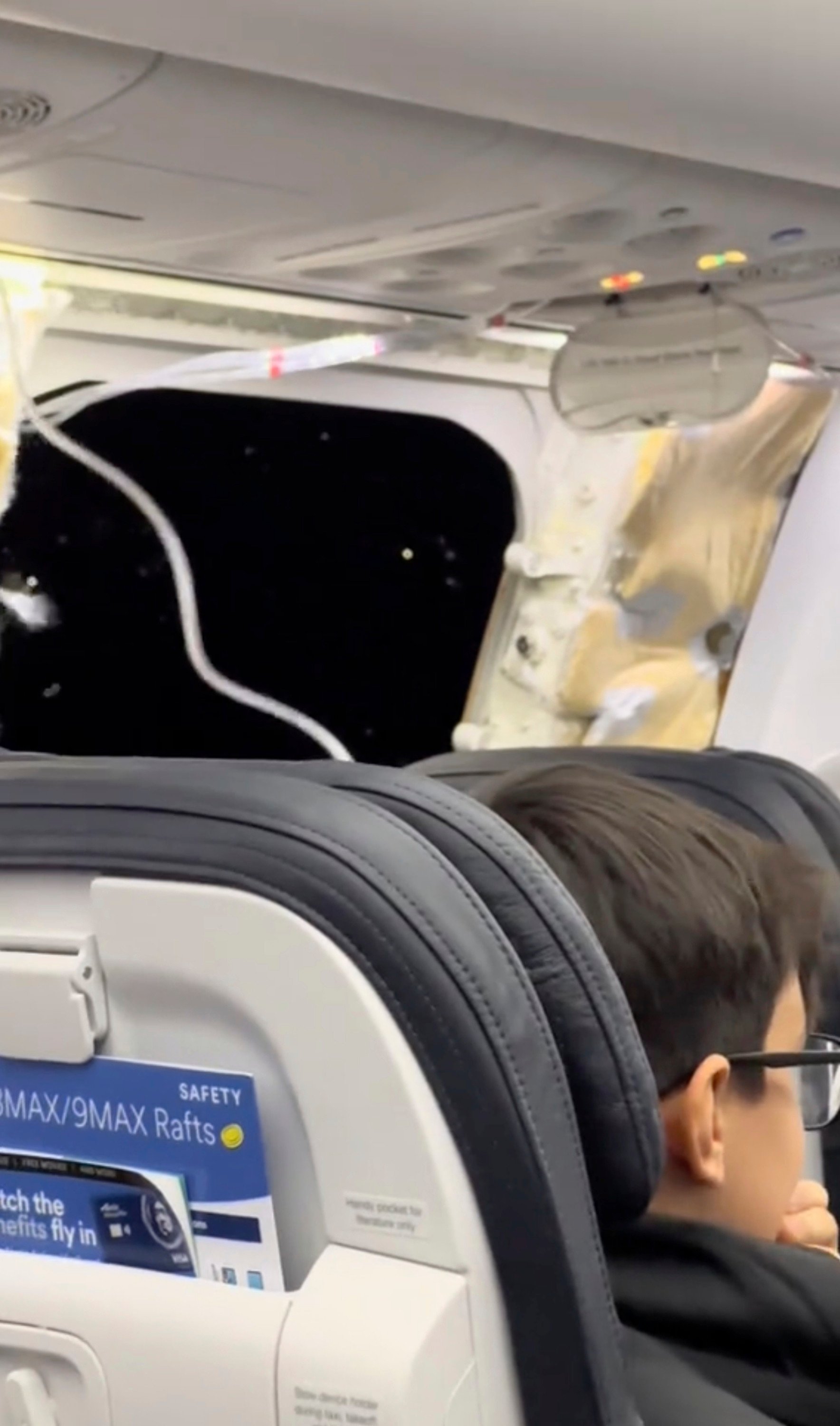
08 Jan Boeing Max grounding goes global as carriers follow FAA order
“We are very fortunate this didn’t end up in something more tragic,” Jennifer Homendy, the head of the National Transportation Safety Board, said at a press conference in Portland, Oregon, on Saturday. “We’ve now determined based on our definition of substantial damage that this is an accident, not an incident.”

Only two US airlines operate the 737 Max 9 variant: United with 79, and Alaska Air with its 65. Alaska said late Saturday it was again removing 18 737 Max 9s that it had already returned to service based on recent maintenance, and said it would wait for details of additional work required by the FAA.
The company wasn’t sure what else would be needed before adding the planes back to its fleet, and said it expects travel disruptions to last through mid-week.
US air safety body says no passengers were seated near 737 fuselage that failed
US air safety body says no passengers were seated near 737 fuselage that failed
United, which earlier said 33 of its Max 9 jets already had the checks required by the FAA, grounded all of the planes as it works to clarify the inspection process and regulators’ requirements.
“We are working directly with impacted customers to find them alternative travel options,” the airline said in a statement.
Turkish Airlines said its country’s civil aviation authority asked it to examine its small fleet of five 737 Max 9 planes. Until the technical review is complete, the carrier has withdrawn the jets from service.
Flight 1282 was carrying 171 passengers and six crew from Portland to Ontario, California on Jan. 5 when the crew reported a pressurization issue. A rear left part of the fuselage had blown out, leaving the hole resembling the opening for a door. The aircraft returned to Portland about 20 minutes after takeoff, having reached an altitude of about 16,000 feet (4,800 meters).
Inside the aircraft, which was delivered to Alaska Air only in October, part of the cabin wall had also torn off, exposing insulation material. Video footage showed the aircraft landing again in Portland in darkness, with passengers seated close to the gaping hole. Nobody was seriously injured.
“A mini boom or mini explosion rattled and kind of shook the plane,” said passenger Nicholas Hoch, a 33-year-old architect, adding that there was an instantaneous depressurization of the cabin. “The best way I can describe it is as this white vapor or cloud just rushed through the plane and, you know, blew my head back a little bit. My hat flew off and that was jarring to say the least.”
The cabin lights flickered and air masks dropped from the ceiling, Hoch said. No one was sitting in two seats next to where the door blew out, or “this story would have been a lot different,” he said.
China’s aviation regulator conducted an emergency meeting a day after the incident to consider a response, including a possible grounding of the Boeing Max fleet in the country, according to two people familiar with the situation, who asked not to be identified discussing private deliberations. The aircraft variant involved in the Alaska Air incident isn’t flown by Chinese carriers.
China was the first country to ground the 737 Max after the two crashes several years ago. Relations have only gradually improved, with China taking the first delivery of a larger 787 model in several years in December. It has yet to resume 737 deliveries.
Boeing said it supports the FAA move and that it was in close touch with the regulator and with customers. A technical team from the US planemaker is supporting the probe. The European Union Aviation Safety Agency said it’s checking if it will need to mandate anything.
“Safety will continue to drive our decision-making as we assist the NTSB’s investigation into Alaska Airlines Flight 1282,” FAA Administrator Mike Whitaker said in a post on X.
Some lawmakers are seeking answers from Whitaker and Boeing on how they will keep travelers flying on similar aircraft safe.
“America has long held the record of having the safest airspace and flight protocols in the world,” Representative Norma Torres of California said in a letter to the FAA administrator. “That said, Boeing’s track record, along with the FAA’s safety oversight in recent years, has raised serious, warranted concerns for the flying public.”
The 737 Max 9, which is Boeing’s longest single-aisle variant, has modular fuselage layouts, allowing for emergency doors to be installed more variably depending on the number of seats. This gives operators greater flexibility with the cabin configuration.
On the Max 9, Boeing includes a cabin exit door aft of the wings, but before the rear exit door. This is activated in dense seating configurations to meet evacuation requirements. The doors are not activated on Alaska Air aircraft and are permanently “plugged.”
Alaska Airlines had scheduled more than 5,000 flights with the Boeing 737 Max 9 model in January, and United almost 8,000, according to aviation data provider Cirium. There are 215 Max 9 aircraft in service globally, with 76 on order, including 25 by Alaska Air, Cirium said.
The grounding is a major setback for Boeing, which has grappled with manufacturing defects and costly repairs in recent years. Boeing has been forced to fix misaligned drilling holes in the rear section of the 737, and most recently the FAA said it’s monitoring targeted inspections of Boeing 737 MAX airplanes to look for a possible loose bolt in the rudder control system.
The Alaska Air aircraft experienced pressurization issues twice on Jan. 4, the Air Current reported, citing two people familiar with the matter. A warning light had prompted Alaska Air to remove the jet from extended-range operations, or ETOPs, the outlet said.
Aeromexico said it aims to complete the inspection of its Max 9 fleet as soon as possible, adding it will continue to work closely with Boeing and the competent authorities. Inspections are expected to be completed in the next few days, Alaska Air Chief Executive Officer Ben Minicucci said.
The jet didn’t appear to have suffered the type of powerful decompression that occurred on a Southwest Airlines Co. plane in 2018 when part of an exploding engine shattered a window of the Boeing 737-700, partly sucking a woman seated next to it from the plane and killing her.
“While this type of occurrence is rare, our flight crew was trained and prepared to safely manage the situation,” the carrier said. Alaska Air operates an all-Boeing fleet.
